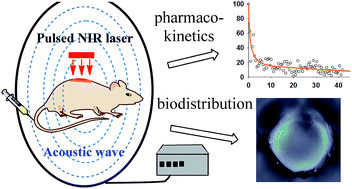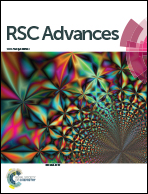In vivo pharmacokinetic features and biodistribution of star and rod shaped gold nanoparticles by multispectral optoacoustic tomography
Abstract
Metallic nanomaterials, especially gold nanoparticles, which have low toxicity and high photothermal conversion efficiency, exhibit promising theranostic applications in biomedical fields. However, detailed preclinical studies of these nanomaterials, such as pharmacokinetics, metabolism, long-term stability and toxicity potential should still be performed. Photoacoustic imaging as a novel non-invasive imaging technique provides convenience for studying real-time semiquantitative pharmacokinetic and biodistribution profiles of drugs or probes to determine whether they can reach the target areas and their metabolic pathways. In this article, we prepared chitosan-capped star shaped gold nanoparticles (AuNSs) and used multispectral optoacoustic tomography (MSOT) to visualize AuNSs in the blood vessels, liver, spleen and kidneys in real time. We also compared these results with chitosan-capped rod shaped gold nanoparticles (AuNRs). The results show that both AuNSs and AuNRs experience rapid blood clearance and have fast and long-term accumulation in the liver and spleen (reaching the peak value within 10 min). The pharmacokinetic data of the two gold nanoparticles fitted to the two-compartment model. The important pharmacokinetic parameters were calculated. The results from MSOT were qualitatively validated by inductively coupled plasma mass spectrometery (ICP-MS). Our results demonstrate that MSOT can serve as an effective tool to monitor gold nanoparticles' pharmacokinetics and biodistribution in specific organs.


 Please wait while we load your content...
Please wait while we load your content...